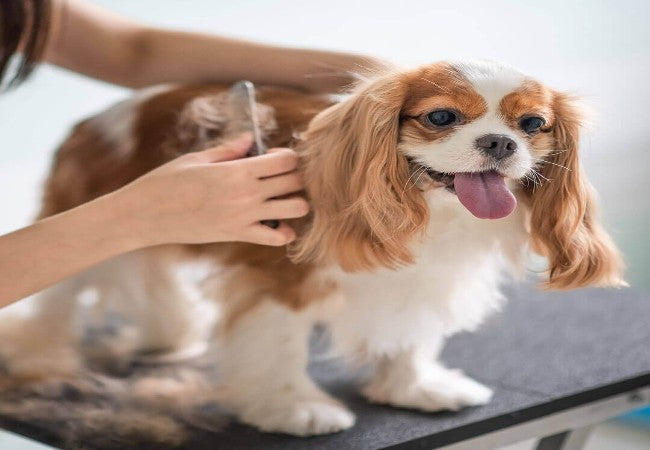New Puppy Care at 12–18 Months (2025): Vet‑Approved Guide for Thrive & Transition 🐶

In this article
New Puppy Care at 12–18 Months (2025): Vet‑Approved Guide for Thrive & Transition 🐶
By Dr. Duncan Houston BVSc
🔍 This Phase Is Crucial
At 12–18 months, most small and medium breeds reach adulthood, while large and giant breeds may continue growing until 24 months. Their bodies appear mature, but socially and behaviourally, they’re in adolescent mode—marked by boundary testing, bursts of energy, and occasional training lapses.
📊 Growth & Physical Changes
- Small breeds: Typically complete growth by 12 months.
- Large breeds: Growth plates may remain open through 18–24 months; avoid high-impact exercise until then.
- Coat development: Puppy fur transitions to adult coat—adjust grooming routines accordingly.
🍽️ Nutrition & Diet Transition
Continue feeding puppy-specific food until fully grown. Transition timelines based on size:
- Small breeds: 10–12 months
- Medium breeds: ~12 months
- Large breeds: 12–18 months
- Giant breeds: up to 24 months.
Proper diet during growth protects joints and supports mature energy needs. Slowly transition to adult formula over 7 days to avoid GI upset.
💉 Vaccines & Preventative Health
- Booster vaccines (distemper, rabies, leptospirosis, Lyme) typically due 12–18 months—follow vet advice and local regulations.
- Ensure ongoing parasite prevention (heartworm, flea/tick, deworming).
- Schedule annual well‑dog exams; monitor weight, hips, dental, and nutrition intake.
🧠 Behavior & Emotional Health
Adolescence brings shifts in behaviour:
- Puberty can bring marking, mood changes, or distractibility—monitor intact males and females carefully.
- Another fear period often appears around 14–18 months—continue positive, low-stress exposures to support confidence.
- Boundary pushing is common—consistent routines, clear rules, and reinforcing training help prevent regression.
🏃 Exercise & Joint Care
Maintain activity that supports muscle and social development while avoiding joint strain:
- Long walks, play, and gentle hikes are great; avoid repetitive high-impact exercise until growth plates close.
- Large breeds may benefit from early joint supplements (e.g., glucosamine, omega‑3) once growth slows.
- Mental games, scent work, and puzzle toys support engagement without physical strain.
🛁 Grooming & Adult Coat Care
- Adult coats shed more—brush 2–3× weekly or daily for double-coated breeds.
- Skin checks during grooming help monitor for allergies or parasites.
- Continue dental care routines started early—clean teeth and check gums at each vet visit.
📋 Dr Houston’s 12–18 Month Puppy Checklist
- ✔️ Track size & weight weekly; identify maturity milestone.
- ✔️ Shift from puppy to adult food based on breed timing.
- ✔️ Schedule and receive core/recommended vaccines and preventives.
- ✔️ Reinforce training—challenge with tricks, boundaries, and calm behavior.
- ✔️ Exercise within growth-safe limits; introduce joint support as needed.
- ✔️ Maintain grooming, coat transitions, and oral health care.
- ✔️ Watch for fear/anxiety signs and support with low-stress exposure.
- 📱 Ask A Vet always available for specific growth or behavior concerns.
🌟 Final Thoughts
At 12–18 months, your puppy is crossing the bridge from adolescence to adulthood. This stage requires careful monitoring, balanced exercise, continued training, and preventative healthcare to ensure a strong, confident companion. Approach this transitional period with consistency, patience, and vet support—your pup is blossoming into their true self! 🐾❤️
Need breed-specific guidance or help with growth or behavior quirks? Visit AskAVet.com or download the Ask A Vet app—real‑time support tailored to your pup






